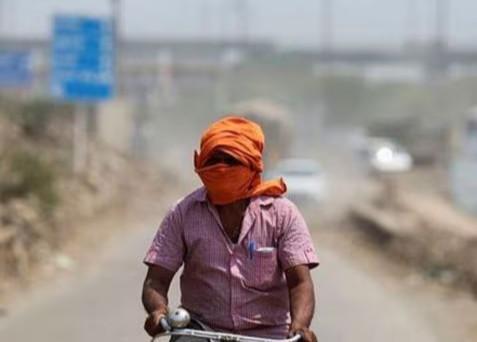
Extreme Heat Endangering Health & Productivity of Workers: Report
As the world grapples with the devastating effects of climate change, a recent report by the World Health Organisation (WHO) and World Meteorological Organisation (WMO) has sounded the alarm on the alarming health and productivity risks faced by workers in extreme heat conditions.
According to the report, worker productivity drops by 2-3% for every degree above 20°C. This may seem like a small percentage, but when you consider the sheer number of workers affected, the impact is significant. The report also highlights that manual workers in agriculture, construction sectors, and vulnerable populations like children and the elderly in developing countries are particularly at risk.
Heat-related illnesses are a major concern in these sectors, with heatstroke, dehydration, and kidney dysfunction being some of the most common health risks. In extreme cases, heat-related illnesses can even be life-threatening.
The report cites several factors that contribute to the increased risk of heat-related illnesses among workers. These include:
- Lack of acclimatization: Workers who are not used to working in hot temperatures are more susceptible to heat-related illnesses.
- Physical demands of the job: Jobs that require manual labor, such as construction and agriculture, are more likely to expose workers to extreme heat.
- Lack of access to cooling measures: Workers who do not have access to cooling measures such as air conditioning, fans, or shaded areas are more at risk.
- Pre-existing medical conditions: Workers with pre-existing medical conditions such as cardiovascular disease, diabetes, or kidney disease are more susceptible to heat-related illnesses.
The impact of heat-related illnesses on worker productivity is significant. According to the report, a 2019 study found that heat-related illnesses resulted in a 10% decrease in worker productivity in the construction sector. This translates to a significant economic cost, not to mention the human toll.
The report also highlights the need for employers to take proactive measures to mitigate the risks associated with extreme heat. Some of the recommended measures include:
- Providing workers with access to cooling measures such as air conditioning, fans, or shaded areas.
- Encouraging workers to take regular breaks in cool, shaded areas.
- Providing workers with training on heat-related illnesses and how to prevent them.
- Encouraging workers to wear light-colored, loose-fitting clothing and to stay hydrated by drinking plenty of water.
- Implementing heat stress monitoring and reporting systems to track worker health and well-being.
In addition to employer measures, the report also highlights the need for governments and policymakers to take action to mitigate the risks associated with extreme heat. Some of the recommended measures include:
- Implementing heat-related illness prevention and treatment programs.
- Providing resources and support to vulnerable populations, such as children and the elderly.
- Encouraging sustainable urban planning and development that takes into account the impact of heat on workers.
- Providing education and awareness campaigns to raise awareness about the risks associated with extreme heat.
In conclusion, the report by the WHO and WMO highlights the alarming health and productivity risks faced by workers in extreme heat conditions. It is imperative that employers, governments, and policymakers take proactive measures to mitigate these risks and protect the health and well-being of workers.
Source: https://repository.inshorts.com/articles/en/PTI/45d9bd2d-ff57-417c-9e5f-831344bb34b0






